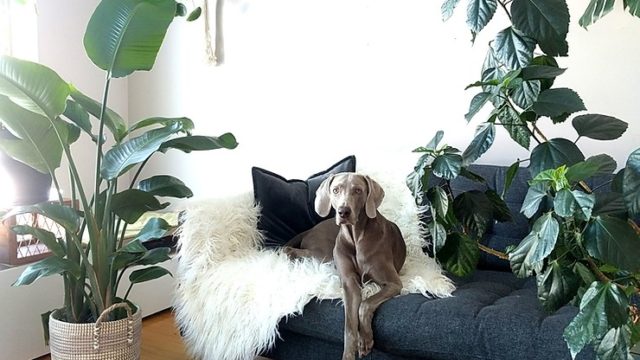
Small houseplants are great. Unfortunately, as any plant parent’s obsession grows, so does the desire for different types of plants. What types of plants you ask? Trees. I’m talking about giant indoor trees that instantly convert your home into a Babylonian garden everyone wants.
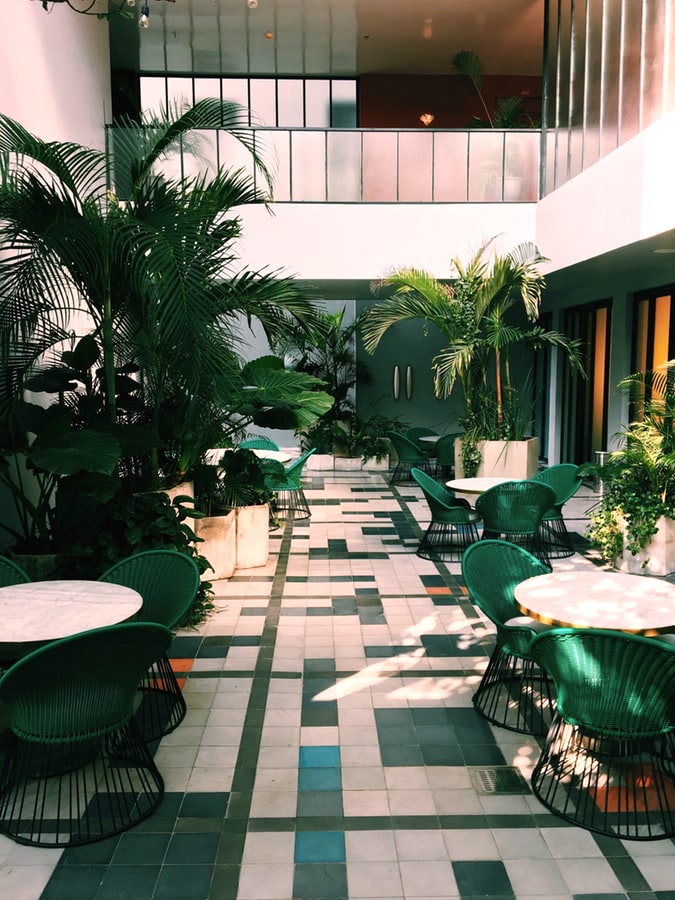
Until fairly recently, I had only seen indoor trees in minimalist restaurants, Anthropologie, and the occasional city hotel. Indoor trees are pretty cool in places like this, sure, but a tree in a house just sound tricky. Honestly, trees in homes seems like a trendy and poor life choice – I’m picturing something you see on a design show that looks amazing for the room unveiling but is realistically impossible for a busy family of four to maintain in a cold house in Maine. Anyway.
Well, let me tell you that, despite how intimidating and questionable adding an indoor tree to your home may be, they’re not. With some planning and a sensible way to get a 6′ plant home from IKEA, you may be on your way to bringing a new plant giant into your life.
So before you go ahead and read on, let’s plan ahead. Here are some things to think about:
- Do you have a place for this tree?
Space is important, so be sure you have space for this tree. More importantly, all of these indoor trees LOVE light. They need at least a South or bright East/West window; dark corners or windowless hallways are abominable. At the end of the day, first and foremost, you need a sunny, open spot for this guy. - Are you prepared for leaf shedding?
Some of these trees shed their leaves and dried blooms during certain seasons and can be messy. Shedding trees are specified below, and if this is a problem, choose one without leaves. Just kidding, that’s impossible. - Do you have well-behaved pets?
Cats are notorious tree climbers and dogs like marking, like, everything. If you have well behaved pets and not climbers, urinaters, or leaf eaters, you should be all set. I also specify which large plants are pet safe and which are toxic in case you only want to provide pet safe plants in your pet filled home. - Are you able to keep track of watering?
A big to-do is assembling a watering schedule. Large houseplants are well, large. It can be very difficult to see when they need water, and sometimes the “once a week” rule will change drastically depending on the season.
If you answered yes to all of these questions, and be honest, go on your merry way to pick one of these beefy babies.
THE List of Non-toxic and Toxic Indoor Trees
Fiddle Leaf Fig
- Ficus lyrata
- Medium to high light, no direct sun
- Keep lightly moist
- Medium humidity
- Toxic to pets
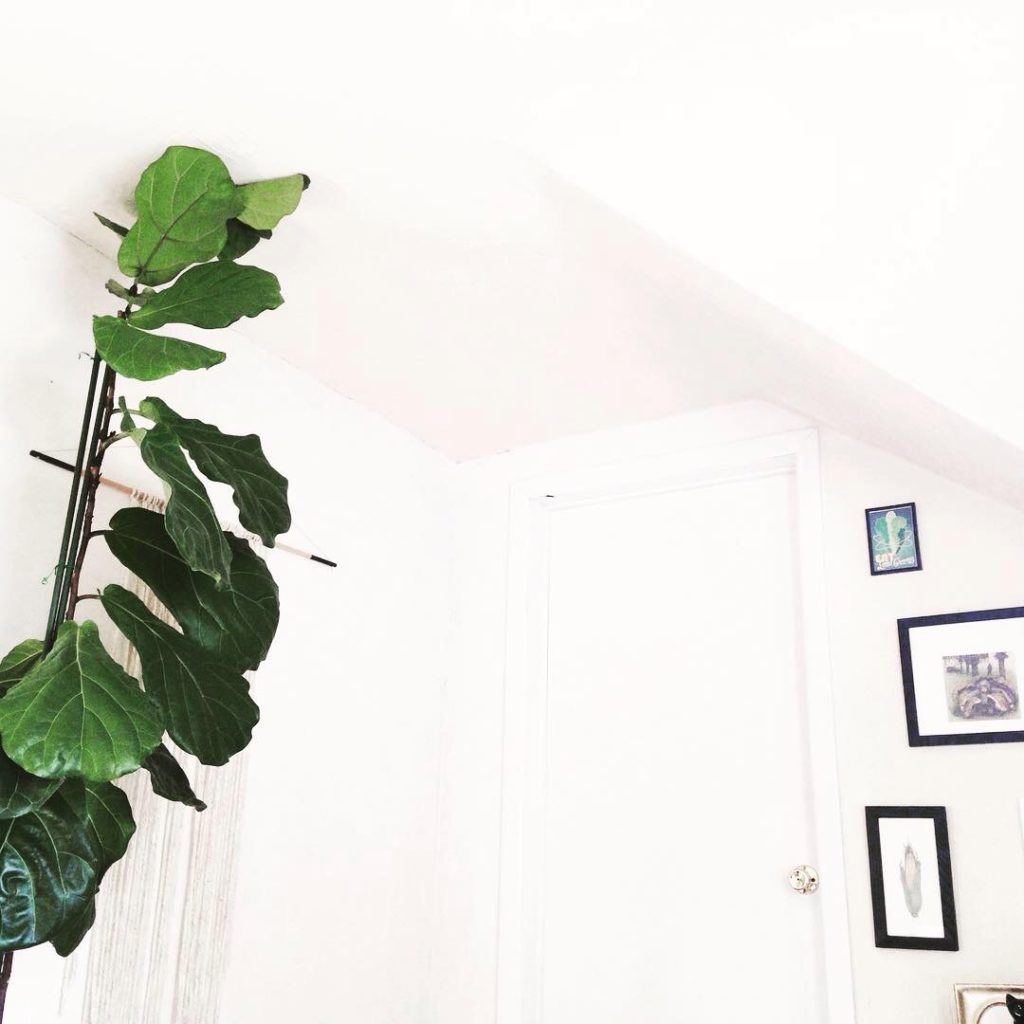
Weeping Fig
- Ficus benjamina
- High light
- Keep lightly moist
- High humidity is best
- Leaves and small berries will drop all year long
- Toxic to pets
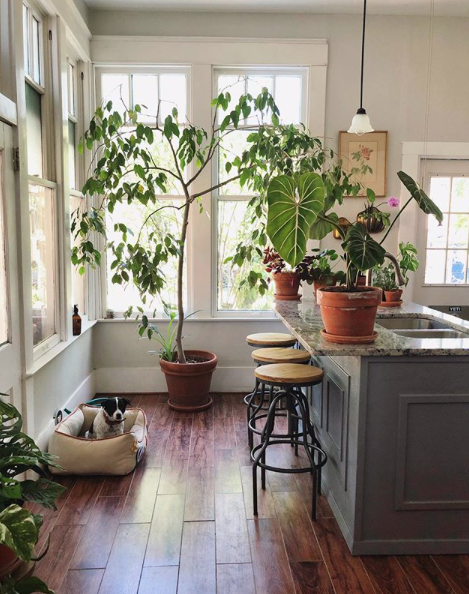
Rubber Tree
- Ficus elastica
- Medium to high light, no direct sun
- Keep lightly moist, do not overwater
- Medium humidity
- Pet safe with reservations
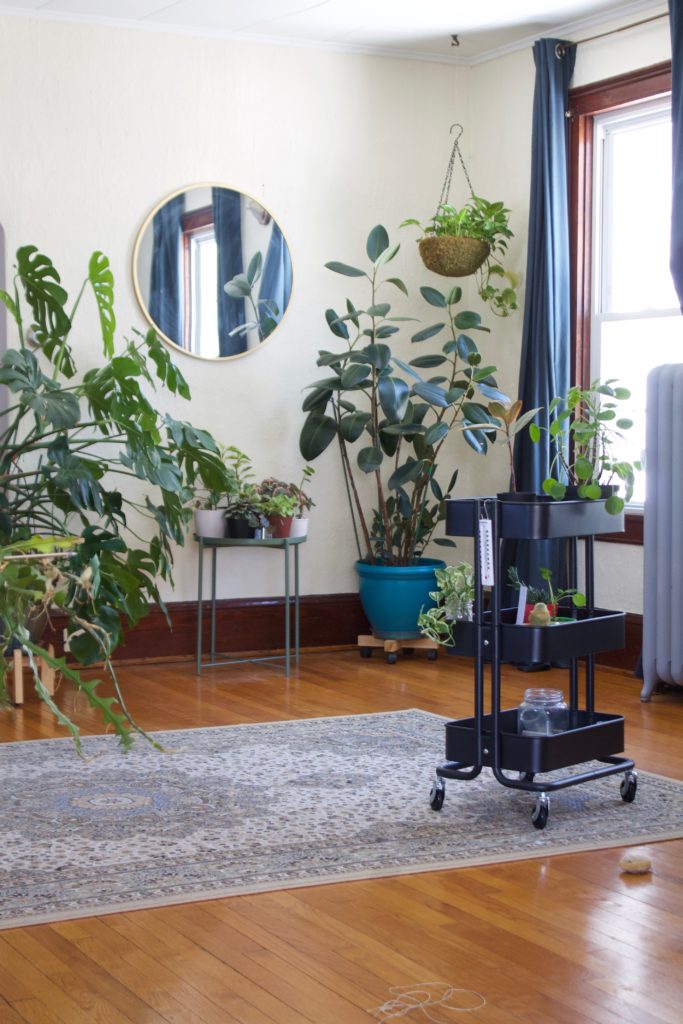
Banana Tree
- Musa
- High light
- Keep moist, do not let dry out
- High humidity
- Safe for pets
Hibiscus
- High light
- Keep very lightly moist
- High humidity
- Flowers will drop and are slippery
- Safe for pets with reservations. While not considered 100% safe, the flowers are the main problem. Cats and dogs may experience gastrointestinal issues if flowers/buds are consumed. Given the flowers drop on these plants, I would only add a hibiscus to your indoor plant collection if your pets are 100% uninterested.
Yucca
- Yucca elephantipes
- High light
- Let dry out between waterings
- Medium humidity
- Toxic to pets
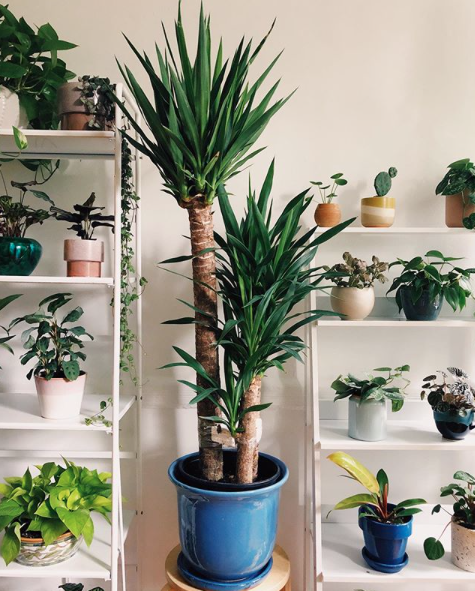
Umbrella Tree
- Schefflera
- Bright, indirect light
- Keep very lightly moist
- Medium humidity
- Fast grower
- Toxic to pets
Norfolk Island Pine
- Araucaria heterophylla
- Medium, indirect light
- Keep lightly moist
- Small needles do drop, turn plant regularly
- High humidity
- Safe for pets, be aware of needles
Money Tree
- Pachira aquatica
- Medium, indirect light
- Keep lightly moist
- Medium humidity
- Safe for pets
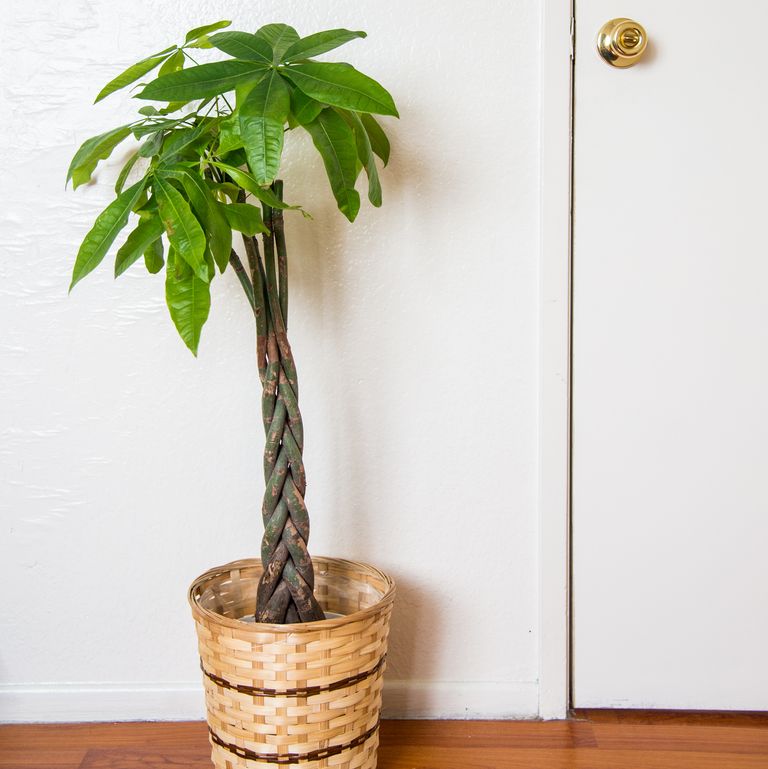
Palm Tree
- Various types, go for fan palms or areca palms.
- High light
- Let dry out slightly between waterings
- High humidity
- Safe for pets, except Sago palm, which is deadly
False Aralia
- Plerandra elegantissima
- Medium light
- Keep lightly moist
- Medium to high humidity
- Keep away from drafts
- Safe for pets
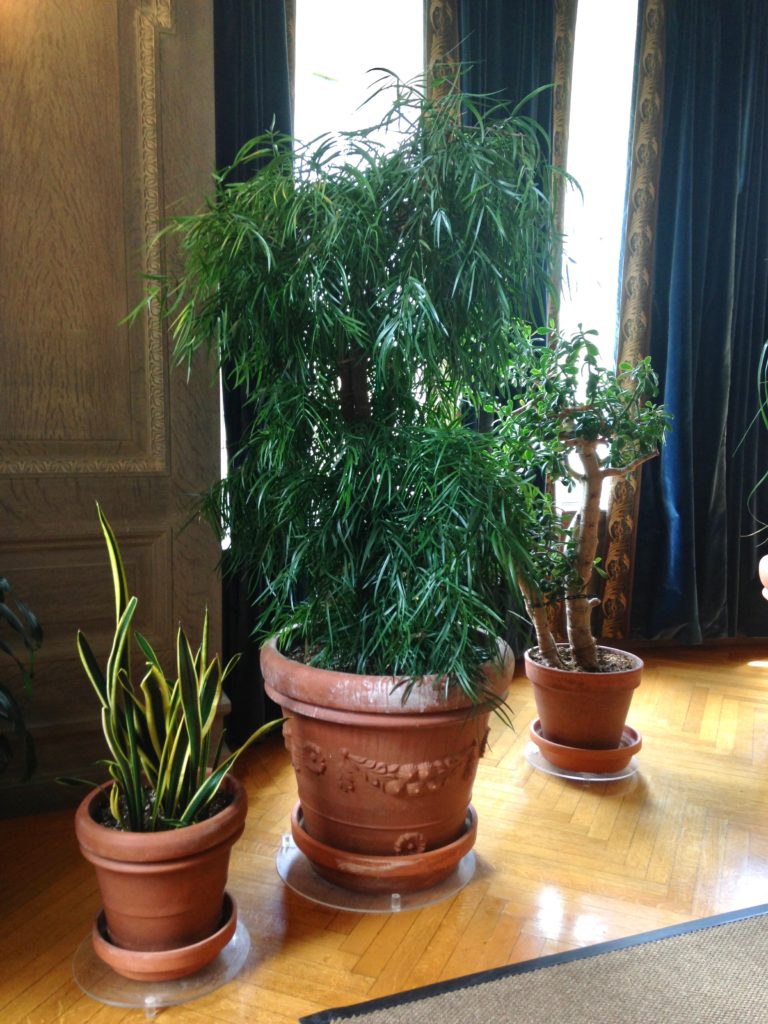
Bird of Paradise
- Strelitzia
- High light
- Keep very lightly moist
- High humidity
- Slow grower
- Toxic to pets
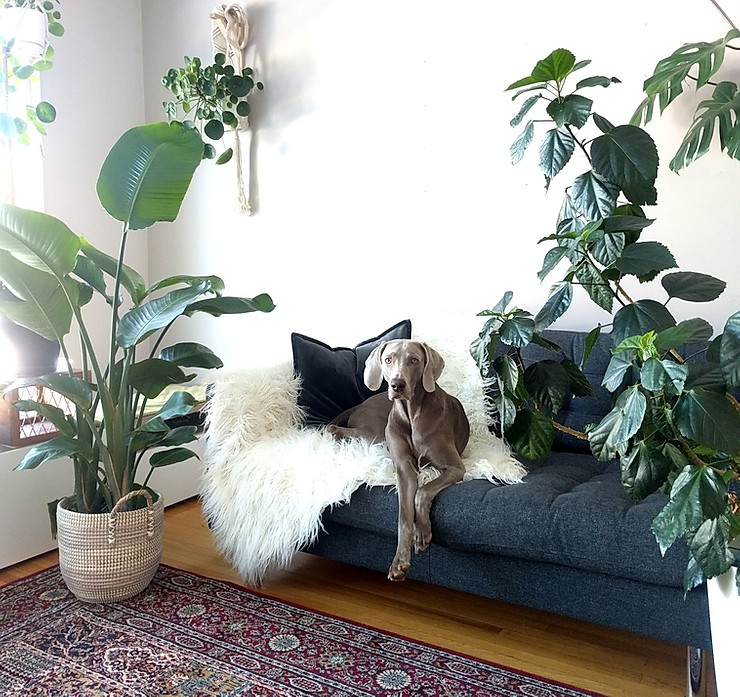


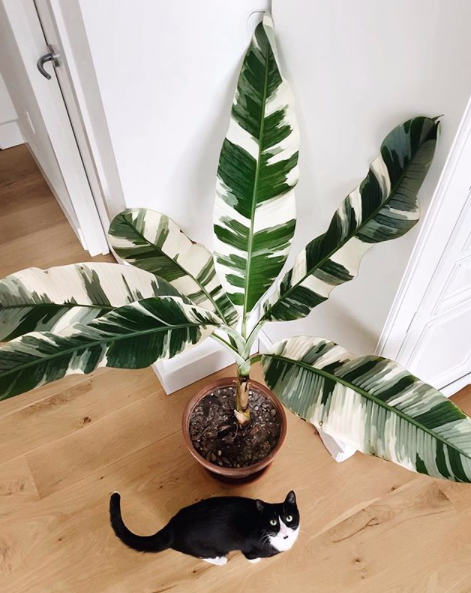
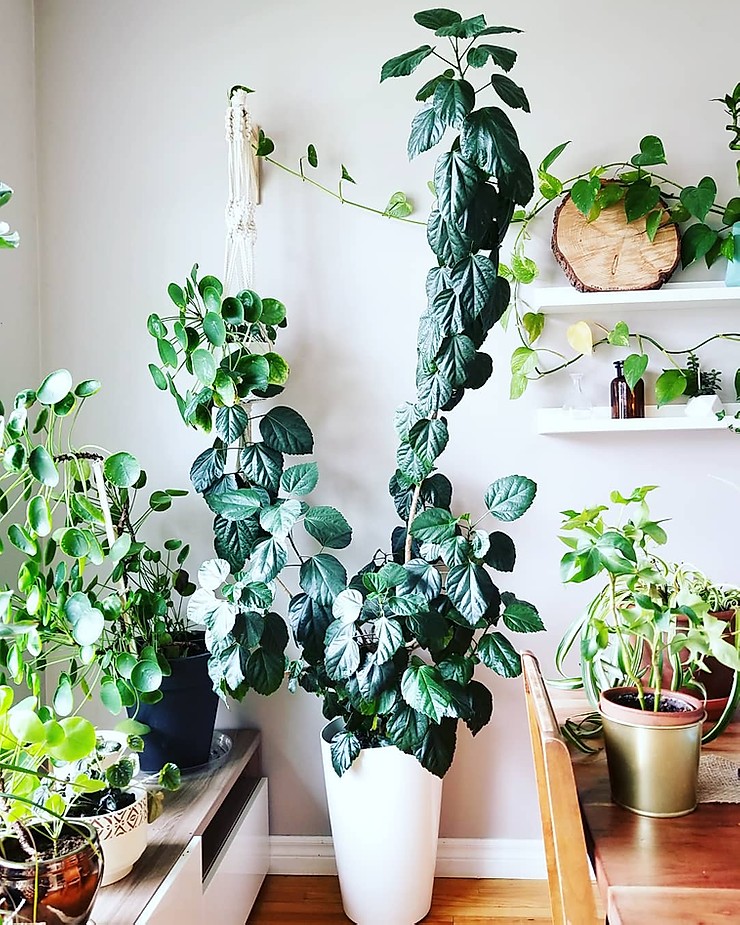
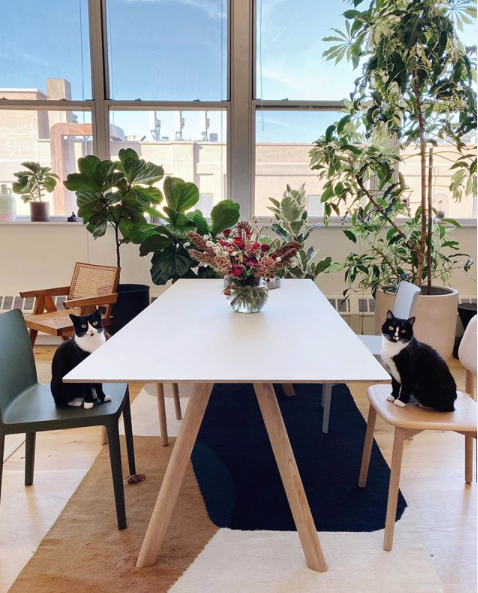
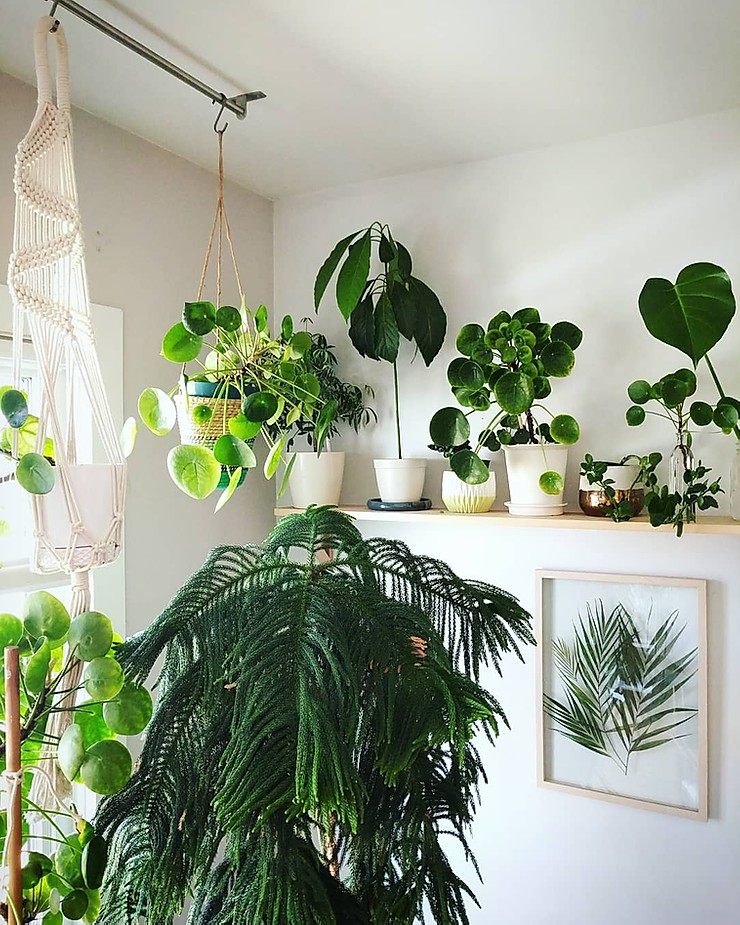
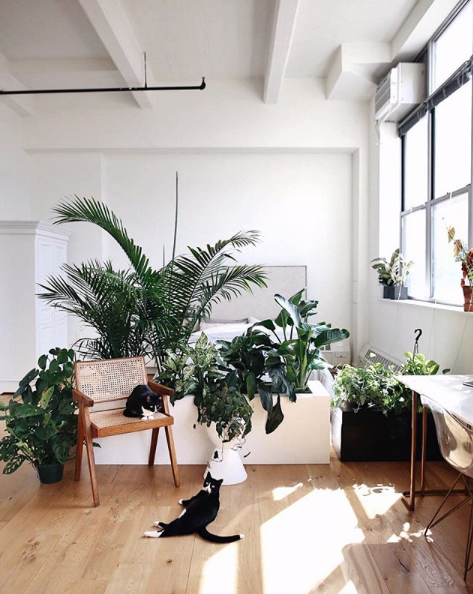

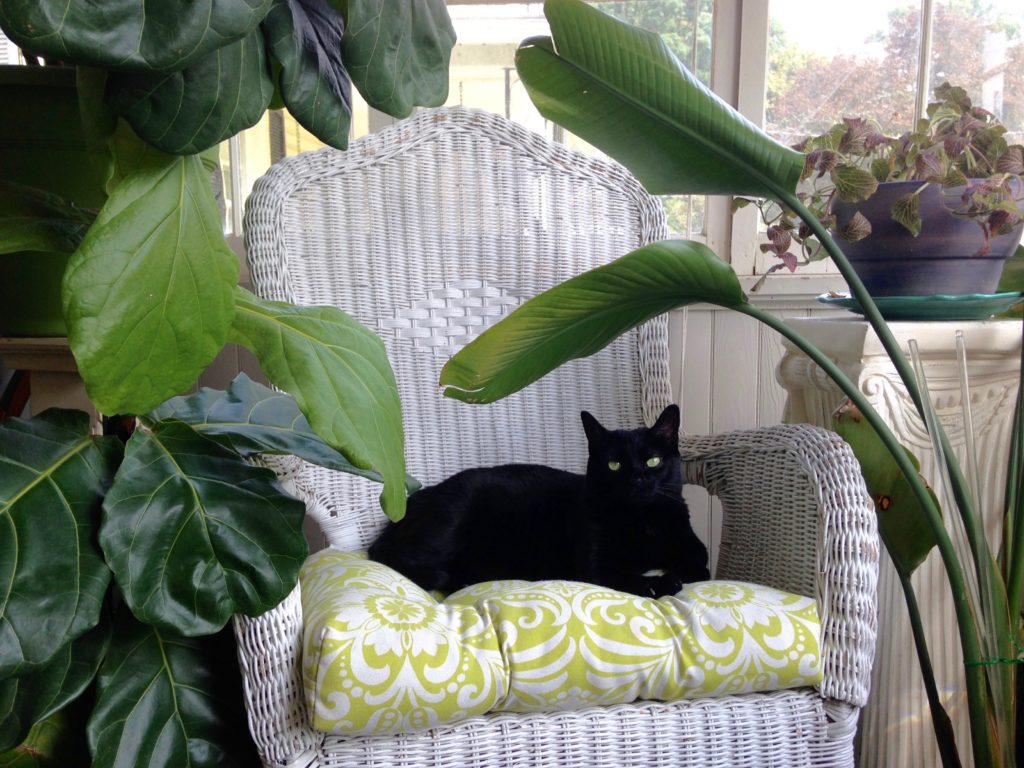
ThAnk you, needing safe pet trees for a house in Maine (like you said). ?
Is there anything pet safe that looks like the bird of paradise? Love the tall potted variety! So happy to halve found your blog, with a curious cat & 2 cheeky dogs, pet-friendly plants are a must around here.
Hi Steph! There isn’t anything quite like a BOP, but a banana tree has that giant umbrella look and is pet safe! I think you can find them (they’re known as Musa) on the Logees website, I think.
Thank you very much for your efforts, I really want to have a few plants besides ferns and spider plants, haha. I especially always yearned for an Epipremnum aureum, but my cats always nibble at every plant I have so of course I wouldn’t risk it.
Could you please include the Latin names though? Also, when I googled false aralia (Plerandra elegantissima, formerly called Schefflera elegantissima and Dizygotheca elegantissima) in my native language, it told me they were toxic to humans and animals.
Hi Anna! Yes I will include the latin names in this post. I didn’t think about plants in other languages so I appreciate this suggestion.
you can keep other plants too! most succulents and prayer plants are safe. rattlesnake plants. small parlor palms strawberry begonias, bromeliads, calathea, the polka dot plant (Hypoestes phyllostachya) is really cute and a personal fave and peperomias. theres plenty of pet safe house plants!
Hi! Thanks for this list. I am a little confused about the bird of paradise tree. I’ve seen these around a lot and they’re gorgeous but I have two cats who would take an investigative nibble (but not more). It’s confusing because it seems there’s multiple types of birds of paradise and ASPCA says the flowers are toxic. The trees I’m seeing (like the one above) don’t appear to have flowers so would having such a tree be a danger to cats?
Hi Jess, these are the same plant, but they rarely flower indoors so they appear as just leaves. I have one and never have issues with my cats munching since the leaves are so big. As long as they’re kept out of reach you should be fine to get one, just keep an eye on your cats.
Hi, Just wanted to say that I’m so glad that I found your website. I’ve killed many indoor plants and now that I’m spending so much time indoors, I’m trying to get better at it. Also having a little gnarly monster (aka my cat) doesn’t help when keeping the plants alive. He has murdered some non-toxic to cat plants and I really needed tips with selecting non-toxic plants and having potentially toxic plants around with him not chewing on them. Your blog was so helpful for that! Appreciate your blog and looking forward to more content!
Hi Amy! I’m so happy to hear this! Feel free to sign up for my newsletter too. 🙂
So happy to have found your blog. It is so hard to find less black-and-white information about plants and pets. My cat seems to avoid toxic leaves pretty well (we have lily bouquets all the time with no issue), but obviously I don’t want anything that will threaten his life if he eats it. I really appreciate your candid honesty about having plants that make the toxic list, and that you talk about exact toxicity and symptoms.
Glad I can help Victoria! Your comment is exactly why I started my blog. 🙂
I love the shape of your weeping fig – do you have any tips on how to encourage the plant into this shape? Mine is more of a bush-type plant at the moment. thanks!
Hi Sharon, the key is careful pruning, and you’ll want to prune any straggly lower branches to create a more top-heavy and weeping look.
This was helpful and gave me some good ideas, but you should know that according to the ASPCA list of plants toxic to cats, Norfolk Pine is toxic to cats. I’d suggest checking with them before stating something isn’t toxic, as not everyone may double check your information. Thanks.
Hi Paula, Not sure where you saw it, but NIP are listed as safe here: https://www.aspca.org/pet-care/animal-poison-control/toxic-and-non-toxic-plants/australian-pine.
Thank you for this info and your site! Very useful!
I was so sad to see that most of the fruiting trees and big leaf trees are toxic to cats, but hopefully I can find a rubber tree or banana tree somewhere (although I am concerned that I won’t be able to keep a banana tree alive)
Hibiscus Toxicity:
Under no circumstances is it acceptable or safe for a cat to eat any part of a hibiscus plant. The exact poisonous element or elements of the plant are unknown. According to the ASPCA, the hibiscus not only is very toxic to cats, but also to other animals, including dogs and horses.
Hi Sean, this must be old info on this website since the ASPCA currently lists this as non toxic. Thanks for letting me know though.
Hi, by chance do you have information on where one can buy the banana tree in the photo? Green & yellow/white colored leaves… Thanks for any tips!
Hi Jen – I believe Alina (who’s plant this is) got this overseas as they are very rare to come by in the States. NSE tropicals *may* have some though!
Double check this list as many of them are quite toxic to cats. As already mentioned above, the https://www.aspca.org/pet-care/animal-poison-control/toxic-and-non-toxic-plants list is your best bet. I am still looking for my cat safe tree that isn’t a palm.
Hi Julia, not all of these trees are pet safe as I specify in each description, I give examples of both to help those with pets and those without. Sorry for the confusion.
Great article!
I’m about to adopt a kitten and I couldn’t find any confirmation/infirmation regarding out indoor tree, the Ficus Alli
On the ASPCA website, there is only one sort of ficus listed which is weird given how common and large this family is..
Any idea about the Ficus maclellandii ?
Hi Elohim – this is also called the banana ficus I believe, and I would put it in the toxic category. Typically anything in the ficus family is, so I would stay away from adding one to your collection if you are getting a kitten.
Hey, everywhere I have read says that the Norfolk pine is not safe for cats or dogs. If ingested can cause vomiting and depression.. and I’ve read some moments where a cat has had seizures
Hey Mara – I work with and go by the ASPCA website which considers these non toxic but to be aware of needles (which I mention). Even non-toxic plants shouldn’t be kept around pets who are interested in eating them. Hope that clears it up.
Hi Ana,
Thanks for such a great article. On your intro photo with the dog sitting on the couch (your dog? Cute!). I am looking for a big leave tall tree like the one to left in the beige pot. What’s the name of that one or similar pet safe? Thank you.
Hi Melissa! That is a bird of paradise and they are not technically pet safe but I have never had any issues of chewing with my animals.
Hi. Are the Rubber Tree plants safe for cats? I feel like I’m finding mixed info. on this. Please let me know. Thank you!
Hello! By scientific standards they are not.